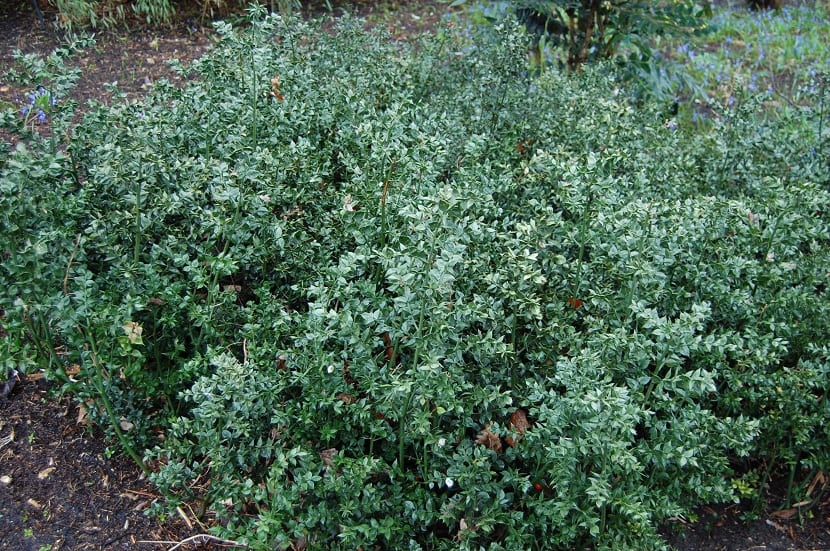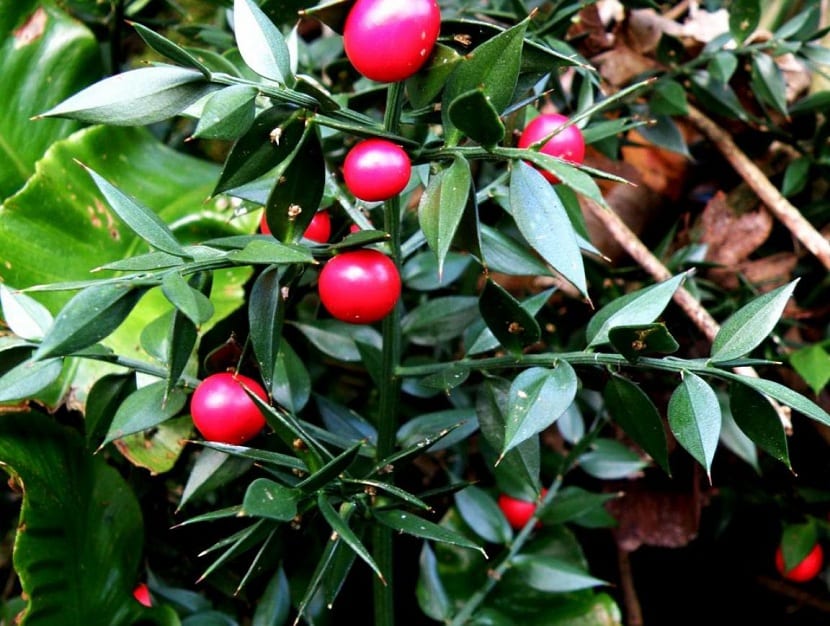
With the arrival of spring we have to give a new life to our garden. To plant a good bush that gives it the color it needs for these dates is the ruscus aculeatus. Commonly called lesser holly, this shrub has an almost permanent bloom and evergreen leaves that will add an extra touch to the garden in winter.
Do you want to know the characteristics of this shrub and learn how to grow it?
Special features
This plant is very special because it has some characteristics that make it unique. The first is its rhizomatous nature. It has underground stems from which the flower stems emerge. They spread very easily thanks to these stems.
Some of the plants that have this rhizomatous structure is ginger. With these stems they can make their way through the soil to absorb large amounts of nutrients. What takes advantage of the ginger is not the root, but a rhizome. That is, a stem.
El ruscus aculeatus it is something like ginger. Its leaf structure is not seen very often. This texture is called filoclado. It may look like a leaf but it is not. Instead, it is called false leaves of the butcher's broom. It is from this foliar texture called filoclado that the flowers come out. They are annual, so you can enjoy them all year round. It is not a very showy flower nor does it have great ornamental power. However, it is a very good choice since in winter, with the lowest temperatures, it is the little that continues to color your garden.
As for its sexuality, it is a dioecious plant so we will have male and female flowers. If we want to plant them in the garden, we will have to have both flowers to obtain berries.
Although the berries have an intense and striking red color should not be eaten, as they are toxic. This evergreen shrub can be dangerous to some animals that consume its berries. If they are consumed they can cause severe gastroenteritis.
Cultivation needs
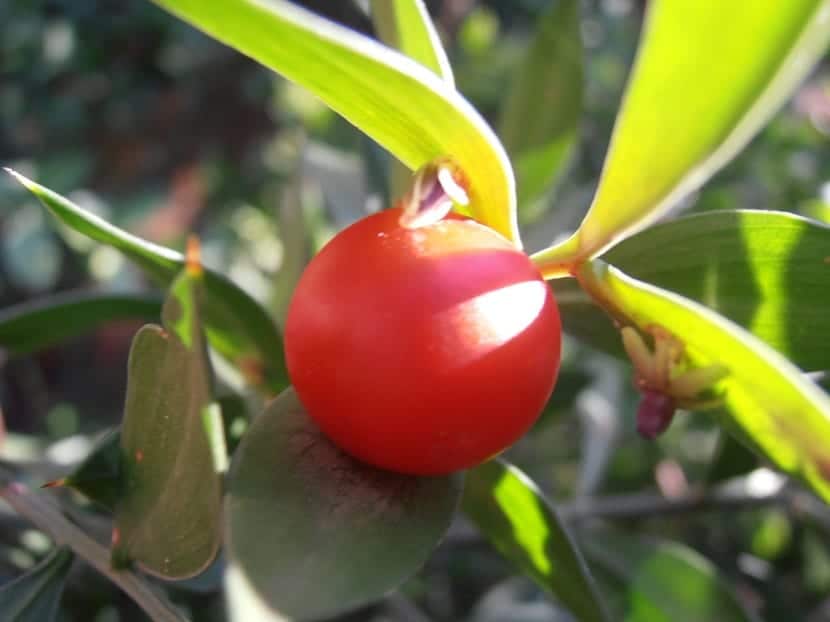
This shrub has some needs that must be taken care of if we want it to grow properly.
Light and temperature
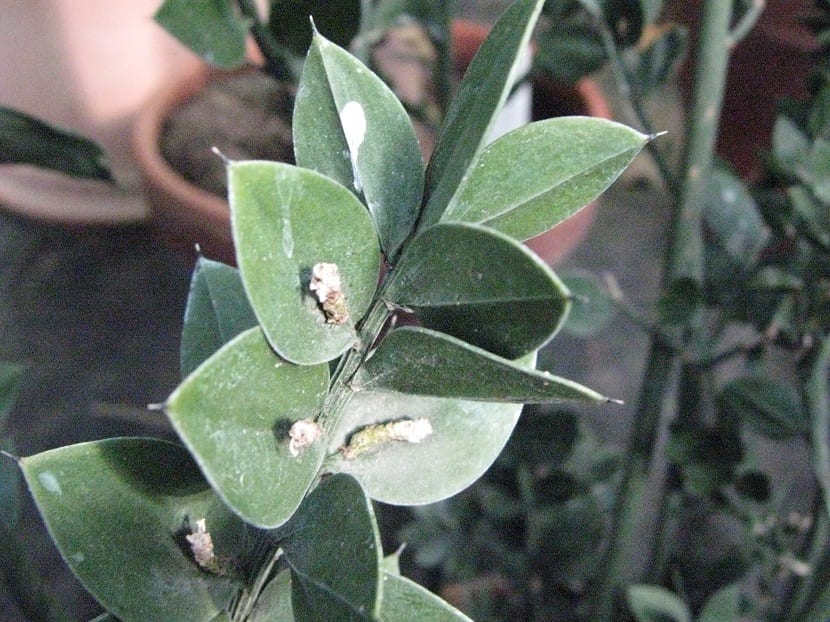
The first thing is the temperature and the light. This shrub needs some shady or semi-shady conditions to grow well. Direct sun should be avoided as it can damage its leaves and berries. If the winter frosts are very severe and frequent, the ruscus aculeatus it can get to suffer a lot.
It supports temperate climates, as long as they are not in the mountains where temperatures drop quite frequently between -5 and -10 degrees.
Irrigation and soil type
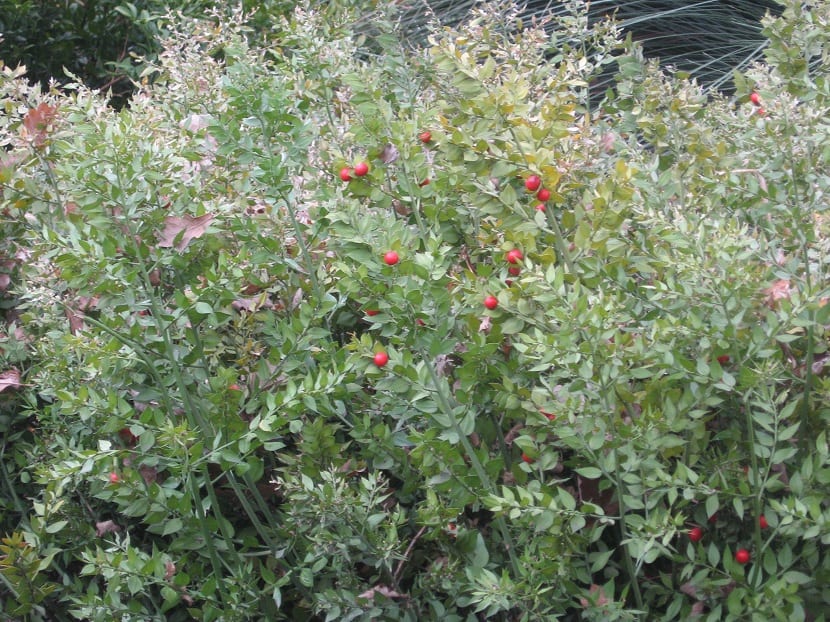
To plant this shrub we will need neutral pH soils with acid tendencies, typical of wooded areas. It is advisable to have abundant and shady vegetation around it. At very bad it can withstand some alkalinity.
During the winter time it does not need watering. Keeping it moist is more than enough. In summer areas if you have to give them a more abundant watering and always keep it moist. If the rainfall is lower, it can tolerate a little more drought.
Multiplication, pests and diseases
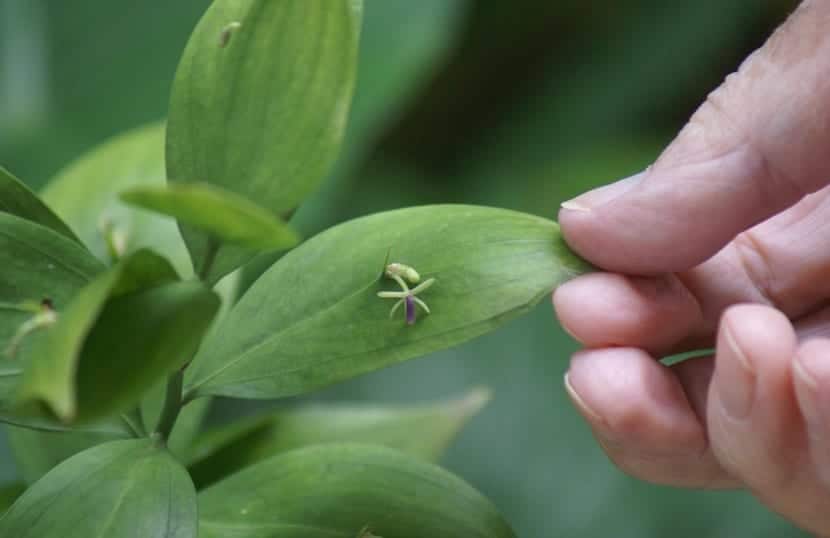
If we want to multiply it we will need to achieve a hedge effect. This is done during the spring by division of the bush or by cuttings. If it is done by cuttings, we have to wait for the plant to take root in a pot and then transplant it when it has the root system.
Its high rusticity gives it great resistance to pests and diseases. By it is generally a fairly hardy plant. Not like some others in the garden.
Properties of the ruscus aculeatus
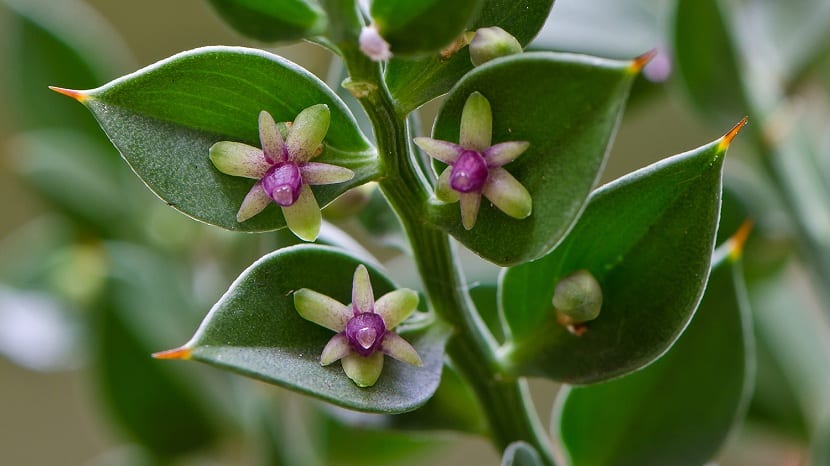
This shrub has been used for its special properties. These properties have their origin in the synthesis of a very specific molecule. It is about the routine or rutoside. It is a flavonoid (group of molecules that many plants synthesize) that are capable of being metabolized and are responsible for giving the plant anti-inflammatory and even anti-cancer capabilities.
These properties can be verified with biochemical and pharmaceutical experts who have claimed that these flavonoids are effective. In the face of such claims, the industry has made many millions from the sale of functional foods and nutritional supplements with high concentrations of these flavonoids. This consumption ended up having a placebo effect only and without being able to demonstrate real effects.
Industries play a lot with these medicinal wonders of plants. The reason for being a natural product makes many people bet on it and invest in health. However, when people report the non-existent effects of many of these plants, it results in a rejection by society.
It is true that there are some studies of bioactivity of the extracts and compounds of the ruscus aculeatus carried out by some universities and research institutes in Germany and Serbia. However, these studies were conducted under very specific conditions. They were used microbiological cultures with a large number of bacteria to check, in isolation, its bactericidal properties.
Among the results we find some quite good, especially from the routine. But we cannot extrapolate these results to humans, since they were very isolated cultures.
Profit Share
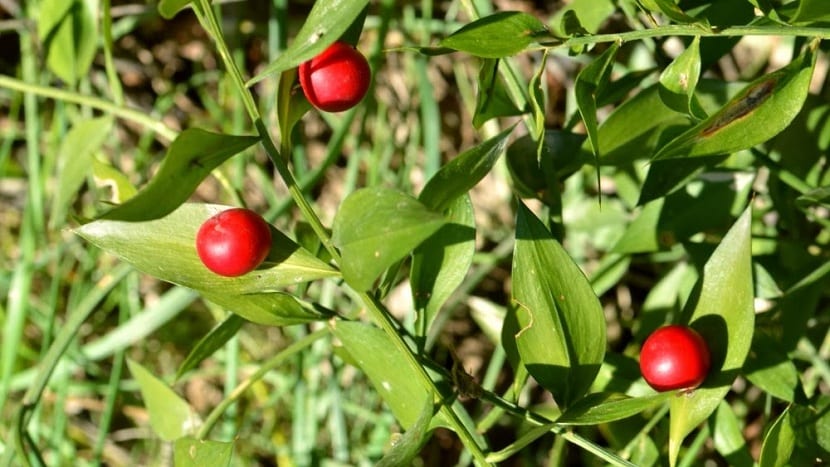
According to people who say that its molecules have an effect on the health of patients, they are often sold dry to prepare infusions. If taken frequently it can help fight phlebitis, swollen ankles, gout, arthritis, etc.. In addition, it is reputed to be a good diuretic.
The aforementioned texture of the stems was formerly used to make some types of brushes. This was done because it is quite hard and scratchy. It was also used to protect pantry food from mice. By covering the food with the spiny phylloclads, the mice did not approach the food.
Finally, it is used as decorative element at Christmas, replacing holly. As you can see, the ruscus aculeatus it is quite a special plant. It is well known and used by many people although the veracity of its effects has yet to be confirmed. With these tips you can take care of this shrub in your garden and see if it really has healing properties.
